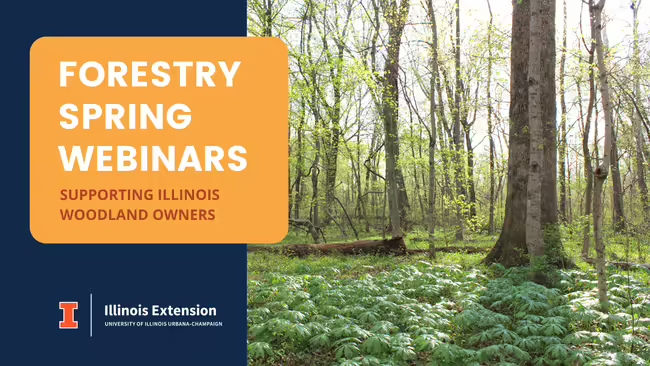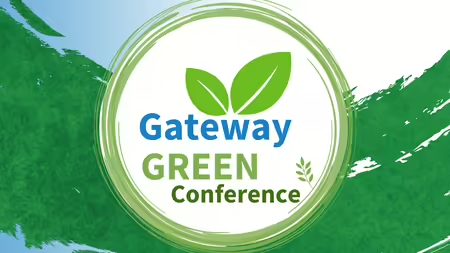
Bat responses to management in hardwood forests
This talk will describe the roosting and foraging ecology of bats that use hardwood forests during the summer months, with a focus on four sensitive species that are declining from white-nose syndrome. We will review data from applied studies that have asked questions about the responses of these species to silvicultural practices in hardwood forests and will identify knowledge gaps and potential areas for future research.
Presenter: Joy O’Keefe, Assistant Professor and Wildlife Extension Specialist, University of Illinois
Other workshops in the Forestry Spring Webinar Series
The Extension Forestry Spring Webinar Series includes a different weekly presentation each Wednesday at 2pm Central, starting on March 30, running through May 25. You can choose to sign up for any or all of them! Virtual sessions are 1-hour in length, open to the public, and free to attend. Online registration is required.
Pruning hardwood trees for future sawlog and veneer potential | March 30
This webinar will provide an overview on hardwood pruning techniques designed to increase high-grade sawlog and veneer log potential. We will discuss basic tree physiology, pruning equipment, do’s and don’ts, and corrective pruning / lateral pruning techniques designed to maximize “return on investment” ROI and realize future income potential. Jay Hayek
Ticks of Illinois: Biology, bite prevention, and management | April 6
This presentation will cover the ticks of human health concern in Illinois, disease agents found in ticks by the statewide surveillance program conducted at the University of Illinois' INHS Medical Entomology Lab, best practices for tick bite prevention, and suggestions on land management to reduce tick encounters. Holly Tuten
Ecology and identification of common woodland ferns in Illinois | April 13
Ferns are an integral part of Illinois ecosystems. While ferns can occur in many different habitats, this presentation will focus on ferns found in Illinois woodlands, including their ecology, life history, and how to identify some of the common woodland ferns. Chris Evans
Wetland ecology and restoration | April 20
Once overlooked as wastelands, wetlands provide wildlife habitat as well as numerous benefits to society such as flood control and recreation. Learn about the different types of wetlands in Illinois and efforts to restore these vital habitats to our landscape. Jeff Matthews
The effects of forest management on the relative abundance and nesting success of forest-breeding birds | April 27
This presentation will highlight the results of breeding bird surveys being done in conjunction with forest management (e.g., prescribed fire, thinning, and harvest) at forests in the southern half of Illinois being managed to promote oak retention and regeneration. Jeff Hoover
History of forest pest outbreaks in North America | May 4
North America has a history of exotic pests that extirpate individual tree species, with Emerald Ash Borer serving as our modern example. In our current, ever-globalizing society there is significant risk for future outbreaks that may impact all of our trees from the urban forest to our woodlands. This presentation will examine past outbreaks on our continent to compare and contrast what we have learned historically with the current pests threatening our native trees. Ryan Pankau
Trees and storm damage | May 11
Trees are wonderful plants to incorporate into our landscape and have in our communities but what happens when midwestern weather events threaten the health and safety of these plants? Snow, and ice can weigh heavy on trees resulting in branch failure. Wind events can whip and twist limbs, influencing structural stability of tree canopies. Two diametrically opposed climate events of drought and flooding may not produce immediate symptoms of stress but may emerge over time. Join us as we explore the factors of weather that impact our trees and how to respond in the aftermath of a storm to protect people and treat storm damaged trees. Emily Swihart
Invasive plants and fire: Increasers, decreasers, and management strategies | May 18
Invasive plants have variable responses to fire depending on species, phenology at time of fire, fire intensities, residence time, and other factors. This presentation will review invasive plant responses to fire and how managers and landowners can use prescribed fire to manage invasive plants. While some invasive plants will be reduced through the use of fire alone, other species may best managed with pre-treatment preparation, sometimes years in advance, and planned follow-up management to reduce population size and spread. Recommendations on preparatory treatments, follow-up treatments, and prevention strategies of some common and new invaders will be discussed. Kevin Rohling
